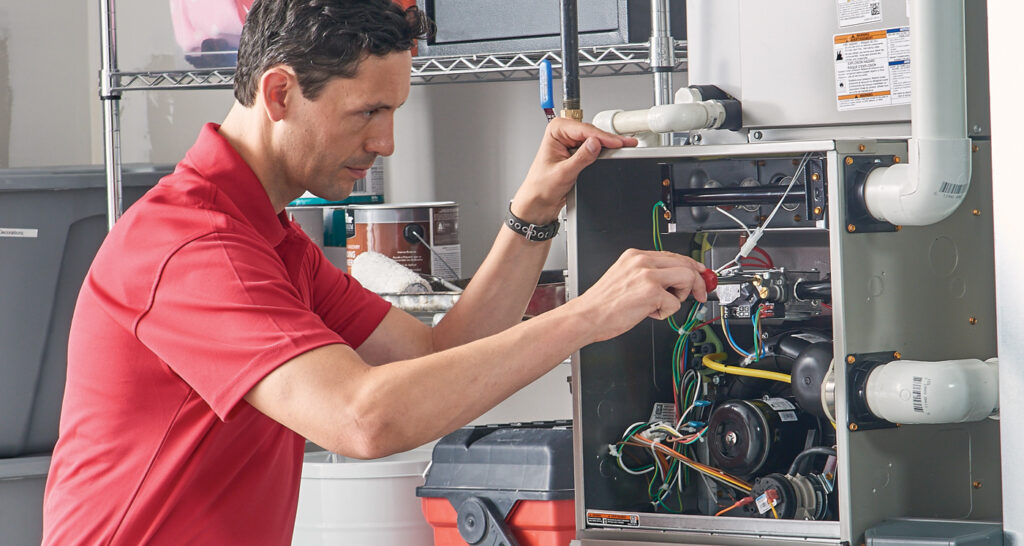Heating Repair Service Dallas TX Ignoring these signs can lead to more significant issues and potentially costly repairs down the line.

Here are common signs that suggest your heating system requires attention:
1. Insufficient Heating:
- One of the most obvious signs of a heating system issue is insufficient warmth or uneven heating throughout your home. If certain rooms feel colder than others, or if the temperature doesn’t reach the set thermostat level, it may indicate a problem with your heating system.
2. Strange Noises:
- Unusual noises emanating from your heating system can indicate various issues. Clanking, banging, rattling, or squealing noises may suggest loose or broken components, worn-out parts, or airflow obstructions. Ignoring these sounds can lead to more severe damage if not addressed promptly.
3. Increased Energy Bills:
- A sudden spike in energy bills without a corresponding increase in heating usage could indicate an inefficient or malfunctioning heating system. This could be due to issues such as a clogged air filter, faulty thermostat, or worn-out components that cause the system to work harder to maintain temperature.
4. Frequent Cycling:
- If your heating system frequently turns on and off (short cycling), it may indicate a problem with the thermostat, heat exchanger, or airflow. Short cycling not only reduces energy efficiency but also puts unnecessary strain on the system, leading to premature wear and tear.
5. Weak Airflow:
- Weak or reduced airflow from your vents can indicate various issues, such as clogged air filters, duct obstructions, or problems with the blower motor. Reduced airflow not only affects heating performance but can also impact indoor air quality and comfort.
6. Pilot Light Issues (for gas furnaces):
- If you have a gas furnace with a standing pilot light, pay attention to its behavior. A pilot light that frequently goes out or produces a weak or yellow flame may indicate issues with the gas supply, thermocouple, or burner assembly, all of which require professional attention.
7. Foul Odors:
- Unpleasant odors emanating from your heating system, such as burning, musty, or rotten egg smells, could indicate various issues. These include dust buildup, mold growth, gas leaks (in the case of a gas furnace), or a malfunctioning heat exchanger. Addressing these odors promptly is crucial for safety and comfort.
8. Thermostat Problems:
- Malfunctioning thermostats can cause heating issues, such as inaccurate temperature readings, failure to reach the set temperature, or an unresponsive display. If you notice discrepancies between the thermostat setting and actual room temperature, it may be time to replace or recalibrate the thermostat.
9. Age of the System:
- Heating systems typically have a lifespan of 15-20 years, depending on factors such as maintenance, usage, and system type. If your system is approaching or exceeds its expected lifespan, it may be prone to more frequent breakdowns and inefficiencies, signaling the need for repair or replacement.
10. Visible Damage or Corrosion:
- Inspect your heating system for visible signs of damage, corrosion, or rust on components such as the furnace cabinet, heat exchanger, or ductwork. These issues can compromise system performance and efficiency and may require professional repair or replacement.
11. Carbon Monoxide Detector Alarms:
- Carbon monoxide (CO) is a colorless, odorless gas produced by incomplete combustion in heating systems. If your CO detector sounds an alarm or displays elevated levels of CO, it’s a critical sign of a malfunctioning heating system that requires immediate attention to prevent carbon monoxide poisoning.
12. Inconsistent Indoor Humidity:
- Heating systems play a crucial role in maintaining indoor humidity levels. If you notice excessively dry or humid air indoors, it may indicate issues with your heating system, such as improper operation, inadequate ventilation, or a malfunctioning humidifier (if installed).
13. Ice Formation on Components (for heat pumps):
- Heat pumps extract heat from outdoor air or the ground to heat your home. If you notice ice buildup on the outdoor unit, refrigerant lines, or coils, it may indicate issues such as low refrigerant levels, airflow restrictions, or a malfunctioning defrost cycle.
Conclusion:
- Heating Repair Service Dallas TX Regular maintenance and timely repairs help extend the lifespan of your heating system and prevent costly breakdowns.
Jenny Beauty Supply Super Center
4343 Gannon Ln #100, Dallas, TX 75237, United States
1-972-283-9000
https://maps.app.goo.gl/DVvHkpZhjENGoZK37
